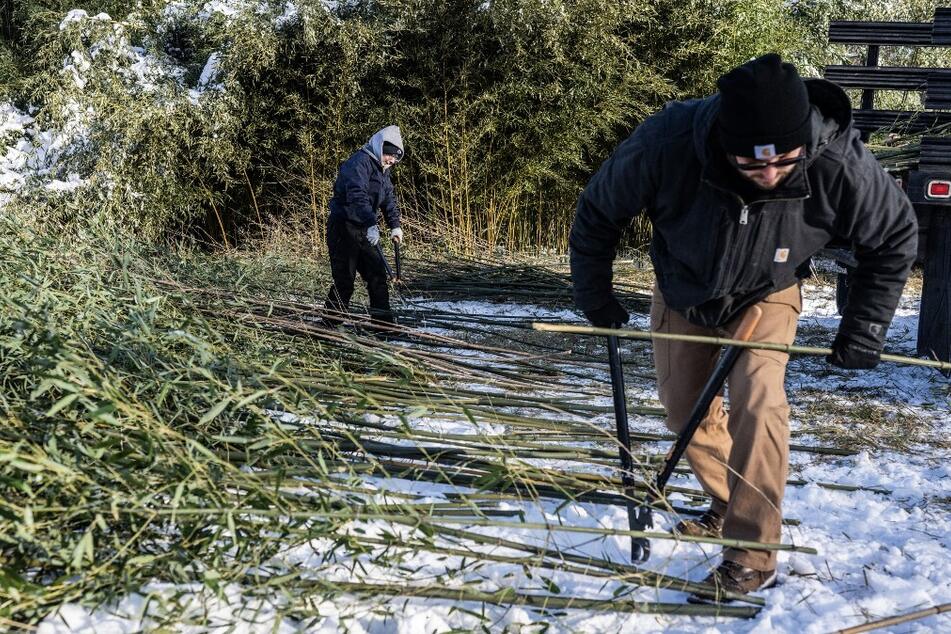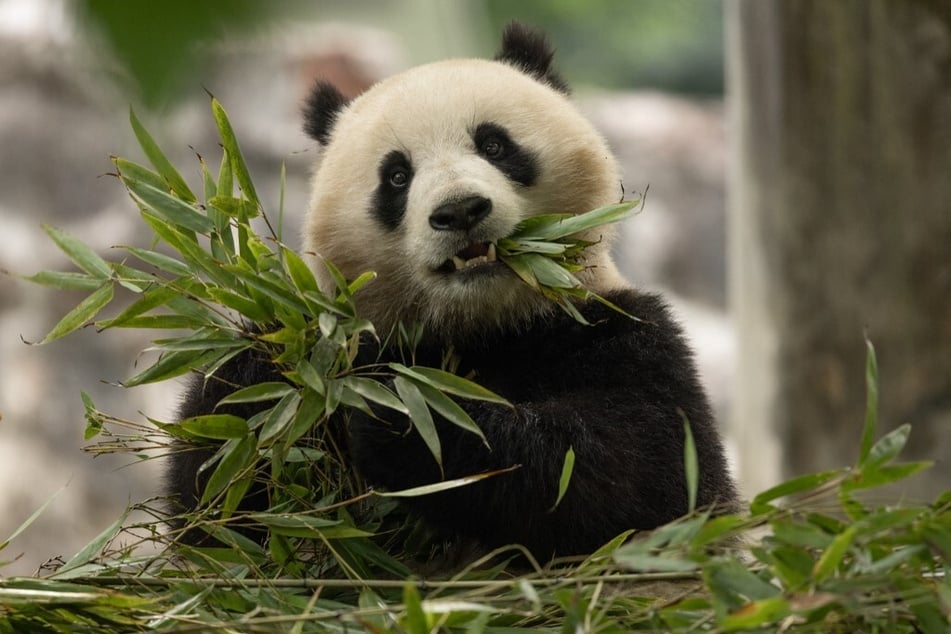Washington zoo's hungry new pandas keep bamboo farmers extra busy
Front Royal, Virginia - On a snow-blanketed field in Virginia, a handful of workers were silent but for the groan of a chainsaw chopping through bamboo – a delicacy for their furry clients down the road in the capital of Washington.

The team, bundled up for the cold, then stuffed up to 700 bamboo stalks into a pickup truck to be driven 70 miles to the Smithsonian's National Zoo to feed, among others, its newly arrived pandas.
Bao Li, a male, and female Qing Bao, landed in the US from China in October as part of a decade-long breeding and research agreement.
Public visitors are this week finally allowed to see the pair at the free-entry zoo and more likely than not, the pandas will be snacking on bamboo harvested at this hilly farm.
But satisfying these bears – who can spend up to 16 hours a day feeding on up to 100 pounds of bamboo – is no easy feat.
Their appetites are so ravenous because pandas' digestive systems are designed to process meat, yet they have evolved to be almost entirely dependent on bamboo, which is of little nutritional value.
"Bamboo harvest is probably one of the most rigorous things that we do," said Mike Maslanka, head of nutrition for the zoo, his hands plunged into pockets to guard against the 10 degree Fahrenheit temperatures at the site in the Shenandoah Valley.
Trudging through ankle-deep snow, three young men chopped down scores of bamboo stems – some reaching 20 feet high – and began piling them up.
After harvesting, the bamboo must pass quality control, where leafless stems are cast aside and only the greenest ones make it to the zoo's bamboo fanatics, which also include Asian elephants and gorillas.
Washington DC's new pandas have demanding eating habits

The pandas add to the already high demands, with Maslanka saying the bamboo farm team is now operating four days a week, up from three days last year. It also means learning the new arrivals' eating habits.
Qing Bao is proving a "little bit more finicky in terms of palate," said Maslanka, who wore a black beanie emblazoned with a panda, while Bao Li is "OK with just about anything that we offer."
Maslanka added that this was a common thread among pandas, whose reputation as picky eaters has prompted deep discussion – and confusion – about their feeding habits.
"We've tried to pin it down to species or age or location or soil type, slope, elevation. We can't, there's no rhyme or reason," he said.
"We'll offer this bamboo to them tomorrow and they won't like it. We'll offer it to them the next day, they'll think it's the best thing ever," added Maslanka, who has over 15 years of experience with the Smithsonian National Zoo.
This makes it a delicate task ensuring the bamboo is up to the pandas' standards. Before being served to the bears, Maslanka said the bamboo is placed into an air-conditioned shed which is cooled to around 55 degrees Fahrenheit and equipped with misters to keep the stems moist.
The Washington pandas are among just a few that remain in the US, including a pair that arrived at San Diego's zoo last summer. Their presence is part of the so-called panda diplomacy carried out by Beijing, in which its black-and-white bears are sent across the globe as soft-power diplomats.
Thanks to conservation efforts, the giant panda was downgraded last year from "endangered" to "vulnerable" on the global list of species at risk of extinction.
Cover photo: Roshan PATEL / Smithsonian's National Zoo and Conservation Biology Institute / AFP

